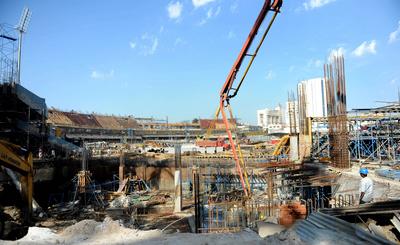Land that is well connected to markets is especially scarce. The most productive agricultural land, on average, is the best connected. Plus, India needs raw materials for fuelling its growth, which are to be found in the interiors of the country. However, tribes — communities used to the idea of ‘commons’ — suddenly find that their land actually belongs to the government which can sell it off as it deems fit.
Bring in the word ‘environment’ and all hell breaks loose. These tribal communities used to live in an ecologically sustainable fashion. By bringing in ‘development,’ we end up disturbing the way of their lives and the ecological balance of the region. Mining or building roads through deep forests translates to disturbing the biodiversity of the land. But does that mean we should stop ‘development’?
The basic economic problem that India is currently facing is how to allocate scarce resources (i.e. land) amongst unlimited uses in an environmentally sustainable fashion. This is a problem that requires an economic, political and environmental solution.
This problem is not unique to India; Latin American countries are facing similar land issues with mining rights and tribes. The Economist (2009) talked about the confrontation that took place in Peru between the government and Indians over land.
A neo-classical economist will turn to cost-benefit analysis. Given that agricultural productivity is low in India, one can presume that the returns to agriculture are quite low. Therefore, land should be used where there are higher returns. The logic is the easy part. Implementation is the crux of the problem.
Let us examine the issues that India faces while trying to acquire land? If one can get over the cultural affinity to land, how does one get adequately compensated for their land? Does one pay the price before, say, the news that a highway is going to be built through your land, or the price after the news is released? How does one make sure that the money actually reaches the people? Plus the additional problem – who are the people – the owners or the tillers of land? How do you rehabilitate the people who are displaced and give them skills such as will enable them to get jobs in other sectors?
The Land Acquisition Bill was enacted in 1894 and our legacy of inherited colonial attitude continued till it came back to bite us really badly. Since then there have been attempts to amend the Act called the Land Acquisition (Amendment) Act 2007. But it has been mired in political controversy.
Attempts have been made successfully at the state level in Haryana, Uttar Pradesh and Gujarat to address the issue and the academics are discussing the various models. Bardhan (2009) proposed an economic model in a piece in Business Standard titled ‘The vexed issue of land acquisition.’
For an inclusive growth strategy, to be able to connect all Indians and provide them both physical and human infrastructure, we need land. At the same time, climate change is real. Unless and until we have a sensible policy which shares the costs and benefits ‘equally’ amongst all the parties — from the landless labourers to business houses — our development is going to be stalled and delayed. Instead of playing short-term politics with land issues, political parties need to sit together and think of solutions that would translate into increased development. It is after all in their interests to do so because increased development would translate to their being voted back to power (as evidenced by the recent re-election of the Chief Minister of Bihar, one of the poorest states of India, who won on the platforms of clean governance and the increased growth and development of the state).
Bornali Bhandari is a Fellow at the National Council of Applied Economic Research, New Delhi. The views expressed here are personal in nature and do not represent the views of the organization.

